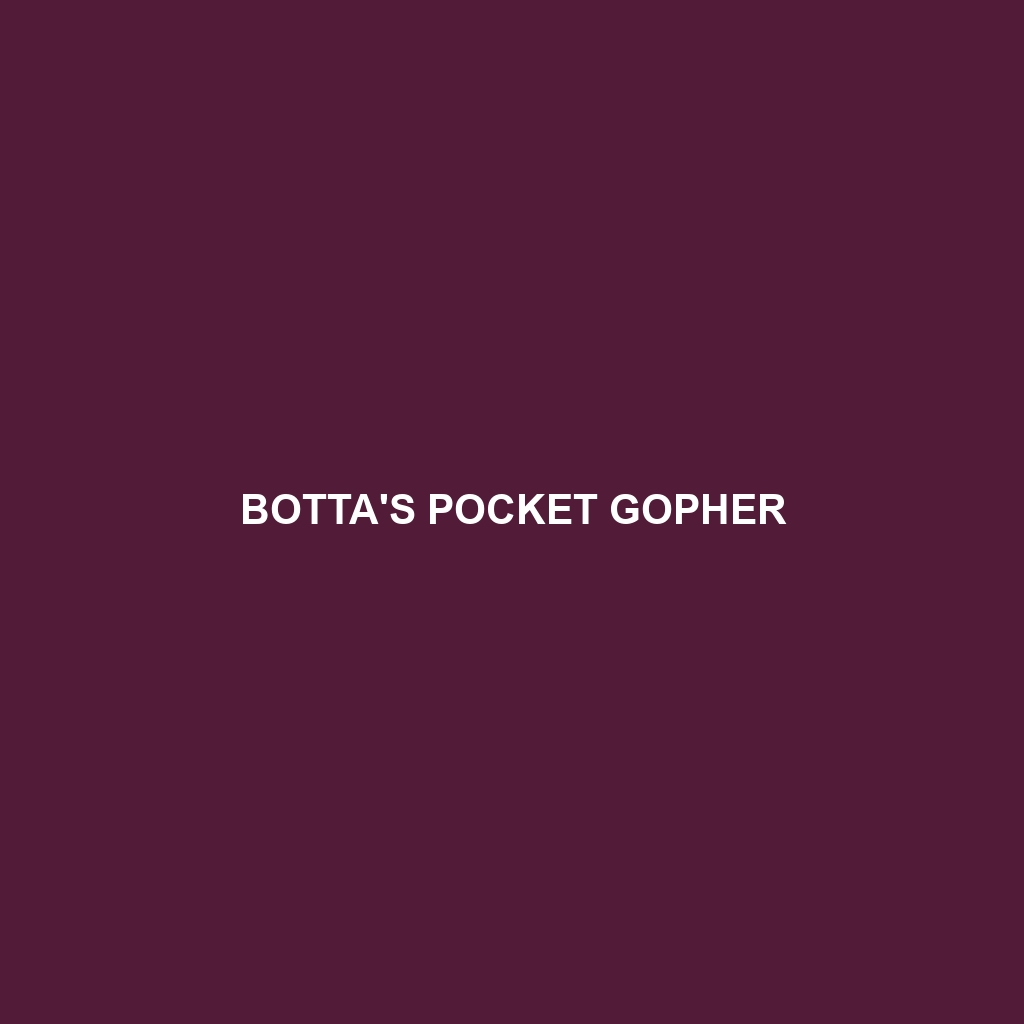Species Description: Botta’s Pocket Gopher
Common Name: Botta’s Pocket Gopher
Scientific Name: Thomomys bottae
Habitat
Botta’s Pocket Gopher is primarily found in the western regions of North America, particularly in areas spanning from California to New Mexico. This species thrives in a variety of habitats, including grasslands, open forests, and shrublands. They prefer well-drained soils which are ideal for burrowing. The diversity of terrain allows them to create extensive underground tunnel systems that are crucial for their survival.
Physical Characteristics
Botta’s Pocket Gopher is characterized by its robust body, which typically measures between 7 to 10 inches in length. Their fur is generally a soft brown or gray, providing excellent camouflage against the soil. One of their most distinctive features is the fur-lined cheek pouches that they use to store food. Their stout legs and large, clawed front paws are adapted for digging, making them adept burrowers.
Behavior
This species is primarily solitary and nocturnal. Botta’s Pocket Gophers spend a significant amount of time underground, where they construct complex burrow systems that can extend up to 200 feet. They are known to forage for food in the early morning or late evening. Their tunneling behavior aerates the soil, which benefits plant life above ground. While they may be largely solitary, males may occasionally engage in social behaviors during the breeding season.
Diet
Botta’s Pocket Gopher is herbivorous, primarily feeding on a variety of plant materials including roots, tubers, and green vegetation. They have a particular preference for grasses and clover, which provides them with essential nutrients. Their unique feeding habits involve the collection of food in their cheek pouches, allowing them to transport it back to their burrow for later consumption.
Reproduction
The breeding season for Botta’s Pocket Gopher typically occurs in the spring. After a gestation period of about 20 to 30 days, females give birth to a litter of 2 to 6 offspring. Young gophers remain in the burrow for several weeks before venturing out on their own. Parental care is limited after weaning, as the young gophers become independent quickly.
Conservation Status
As of now, Botta’s Pocket Gopher is classified as a species of Least Concern by the International Union for Conservation of Nature (IUCN). However, localized populations may face threats from habitat destruction and agricultural practices. It is important to monitor their habitats to ensure their continued survival.
Interesting Facts
One fascinating aspect of Botta’s Pocket Gopher is their ability to alter the ecosystem through their digging habits. They not only aerate the soil but also contribute to the spread of seeds through their tunnels, inadvertently facilitating plant growth. Additionally, these gophers can hold food in their cheek pouches for longer durations, allowing them to survive during tougher times.
Role in Ecosystem
Botta’s Pocket Gopher plays a significant role in its ecosystem as a soil aerator and seed disperser. Their burrowing activities help to improve soil quality by increasing water infiltration and nutrient cycling. Furthermore, they serve as prey for various predators, such as hawks and snakes, thereby contributing to the food web dynamics. By influencing plant growth and soil health, they help maintain the balance of their ecological community.
